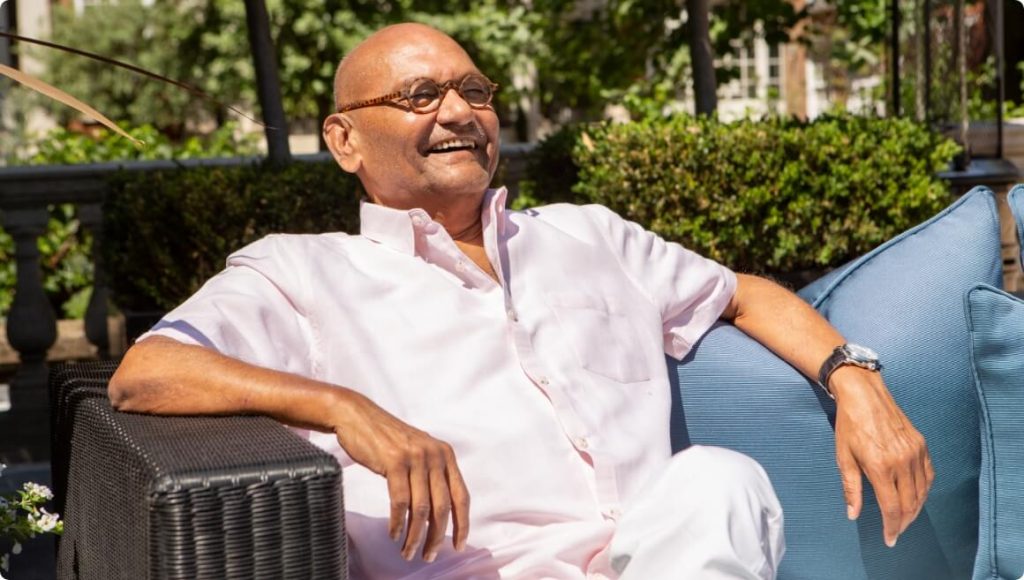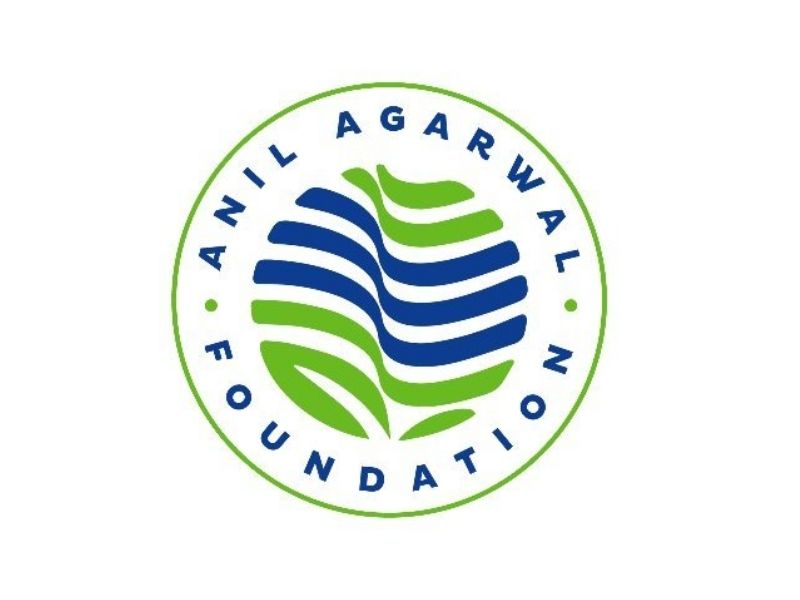
In the dusty lanes of Patna, Bihar, where the Ganges whispers tales of resilience, a young man named Anil Agarwal once peddled scrap metal under the relentless Indian sun. Fast-forward five decades, and that same entrepreneur commands a global empire in natural resources, with a family fortune hovering around $3.3 billion. As of 2025, Agarwal’s journey isn’t just a business success story it’s a testament to unyielding grit, strategic gambles, and a growing conviction that true wealth lies in giving it away. From hawking discarded wires in Mumbai’s bustling markets to helming Vedanta Resources, one of the world’s largest diversified mining conglomerates, Agarwal has rewritten the rules of ambition. But what sets him apart now is his audacious pledge: to channel 75% of his riches back into society, fueling education, health, and empowerment initiatives across India. This is the saga of a self-made titan who turned rust into gold and gold into good.
Humble Beginnings: The Scrap Dealer from Bihar
Born on January 24, 1954, into a modest Marwari family in Patna, Anil Agarwal grew up in a world far removed from the glamour of global boardrooms. His father, Dwarka Prasad Agarwal, ran a small aluminum conductor workshop, scraping by in Bihar’s lower-middle-class neighborhoods. Young Anil attended the local Miller High School, where his classmate was none other than the future political heavyweight Lalu Prasad Yadav. But formal education held little allure for the teenager. Skipping university, he dove headfirst into the family trade at 19, armed with little more than a tiffin box, a bedsheet, and an unquenchable thirst for opportunity.
Mumbai, India’s throbbing commercial heart, became his proving ground. In the mid-1970s, Agarwal arrived in the city with Rs 75,000 in his bank account barely enough for a foothold. He started as a scrap trader, scouring cable companies across states for discarded metals and reselling them in Mumbai’s chaotic bazaars. It was gritty work: haggling over rusted coils, sleeping on trains to cut costs, and enduring nine failed business ventures that tested his resolve. “I learned more from those failures than any textbook,” Agarwal later reflected in interviews, crediting them with forging his fearless mindset.
One pivotal moment came in 1976 when, with a modest bank loan, he acquired Shamsher Sterling Corporation, a fledgling manufacturer of enameled copper products. It was a leap of faith, but Agarwal’s instinct for undervalued assets shone through. He transformed the company into Sterlite Industries, a copper fabrication powerhouse, laying the cornerstone of what would become Vedanta. These early hustles weren’t glamorous they were survival. Yet, they instilled a core philosophy: opportunity hides in the overlooked, whether it’s a pile of scrap or a privatized mine.
Building an Empire: Vedanta’s Meteoric Ascent
By the 1980s, Agarwal’s acumen had elevated Sterlite from a niche player to a metals contender. But his vision stretched beyond India’s borders. In 1995, he orchestrated a game-changing acquisition: the purchase of Madras’s Tuticorin copper smelter from government hands during India’s liberalization wave. It was a bargain at $48 million, but the real genius lay in spotting its potential amid bureaucratic neglect. Under Agarwal’s stewardship, the plant became a profit engine, fueling Sterlite’s expansion into zinc, lead, and aluminum.
The 2003 incorporation of Vedanta Resources Plc in London marked Agarwal’s bold pivot to the global stage. As the first Indian firm listed on the London Stock Exchange, it tapped international capital, raising eyebrows and funds alike. “I was a first-timer in their eyes a scrap dealer dreaming big,” Agarwal quipped about pitching to skeptical investors. To win them over, he joined a grueling 100-km cycling trek with JP Morgan and BHP executives, proving his mettle off the balance sheet. The gamble paid off: Vedanta’s market cap soared, funding aggressive buys like Sesa Goa iron ore in 2007 and Cairn India’s oil assets for $8.5 billion in 2011.
Today, Vedanta stands as a behemoth, with operations spanning 10 countries and interests in zinc, copper, aluminum, iron ore, oil, gas, and power. Its London headquarters belies deep Indian roots over $35 billion invested in domestic mining and tech. Recent feats underscore Agarwal’s enduring edge: a $20 billion semiconductor joint venture with Foxconn in Gujarat, aiming to supercharge India’s electronics ecosystem; a $10 billion fund with Centricus targeting privatized public firms; and a 2024 qualified institutional placement that raised $1 billion. In FY25, Vedanta posted record revenues of Rs 1,50,725 crore, a 10% year-on-year jump, with net profit exploding 172% to Rs 20,535 crore. Debt slashed by $5 billion since 2020 (though $5 billion lingers) reflects Agarwal’s deleveraging mastery. At 71, he’s plotting a demerger into six entities, vowing promoter stakes above 50% while eyeing $100 billion in sector value. Forbes pegs his 2025 net worth at $3.3 billion, a figure that fluctuates with commodities but cements his “Metal King” moniker.
Agarwal’s style? Opportunistic and unpretentious. A strict vegetarian and Krishna devotee, he cycles religiously echoing his Mumbai days and mentors young entrepreneurs, insisting degrees matter less than dreams. Married to childhood friend and fellow cyclist Kiran, with children Agnivesh and Priya (now a Vedanta director and animal welfare advocate), he splits time between London and Mumbai, ever the bridge between East and West.
The Philanthropic Pivot: A 75% Wager on Legacy
Wealth, for Agarwal, was never the endgame. In 2014, inspired by a chance encounter with Bill Gates, he publicly vowed to donate 75% of his fortune then $3.5 billion to charity, making him India’s biggest potential giver. “If you’re in a position to help, you should,” he echoed Gates’ ethos. By 2021, he formalized it via The Giving Pledge, joining global icons like Warren Buffett. As the sole Indian signatory that year, Agarwal committed alongside daughter Priya, framing it as a family mission: “Exchange ideas to eradicate malnutrition and empower women.”

The Anil Agarwal Foundation (AAF), launched in 1992, channels this vision. Its flagship, Nand Ghar, modernizes 4,000+ anganwadis into holistic hubs for nutrition, education, health, and women’s self-help groups impacting 17 million lives, with ambitions for 80 million children and 20 million women by leveraging tech and renewables. The foundation’s Rs 5,000 crore five-year pledge targets hunger’s end (“no one goes to bed hungry”) through healthcare, animal welfare, and grassroots sports. During COVID-19, Vedanta donated Rs 250 crore, vaccinating youth and aiding 1.5 million. In 2025, Agarwal upped the ante: Rs 21,000 crore earmarked for “National Oxfords” no-profit universities blending global excellence with Indian accessibility, tackling education’s equity gap.
Critics point to Vedanta’s environmental scars, like 2018 Thoothukudi protests over pollution (13 deaths led to a plant shutdown). Yet Agarwal counters with sustainability drives: $5 billion for net-zero by 2050, green mining, and community uplift. “Business must prosper society,” he insists, blending profit with purpose.
Legacy in the Making: Beyond Billions
Anil Agarwal’s arc from Bihar’s scrap heaps to London’s listings, from nine flops to a $3.3 billion fortune embodies the Indian dream’s raw power. In 2025, as Vedanta eyes semiconductors and demergers, his bold bet shines brightest: 75% of riches redirected not to vaults, but villages. It’s a radical reframe, urging tycoons worldwide that empires endure through empathy. As Agarwal pedals into his eighth decade, one truth endures: the boy who chased metal scraps now forges a different alloy one of iron will and golden giving. In a world chasing more, his story whispers: the richest rise is the one that lifts others.
Last Updated on Wednesday, October 8, 2025 9:36 pm by Tamatam charan sai Reddy